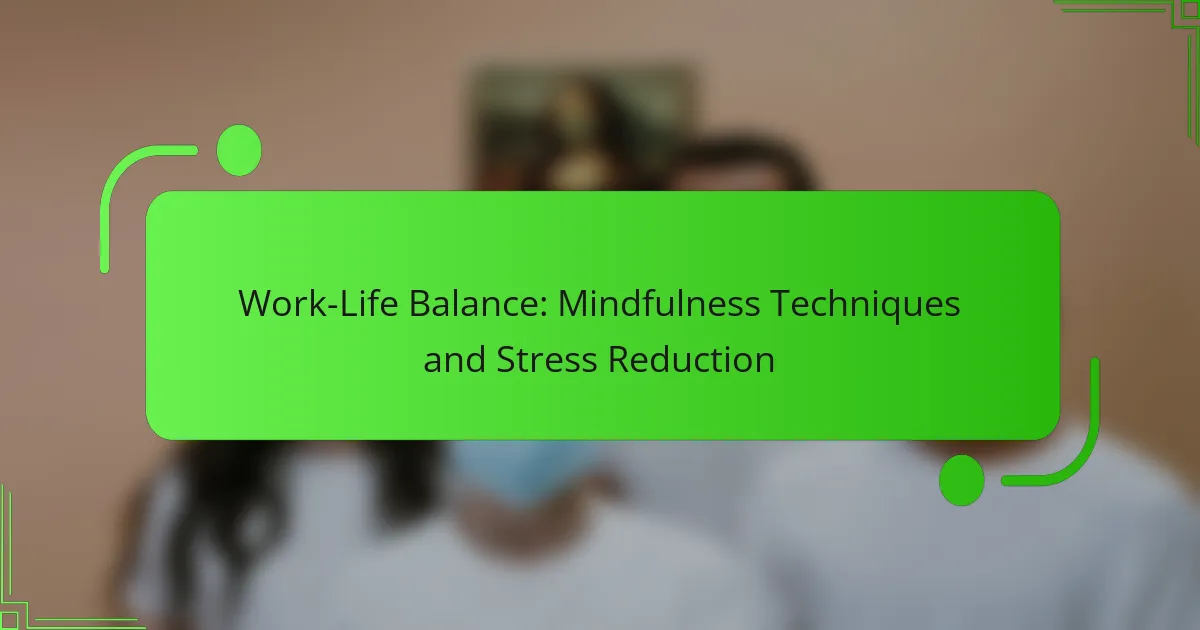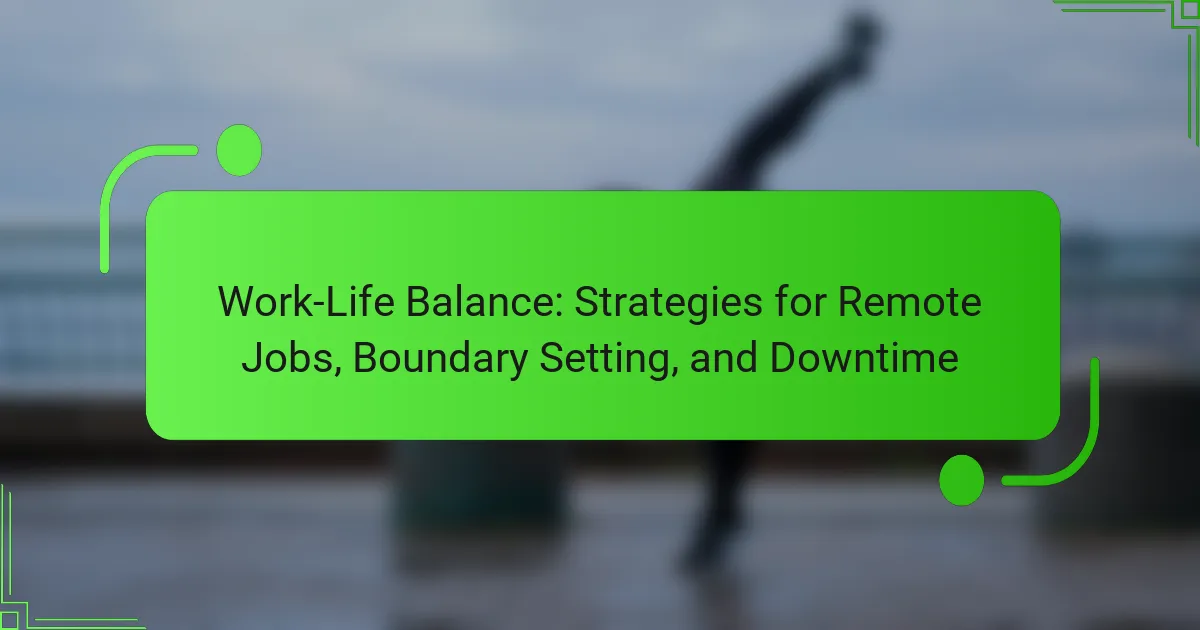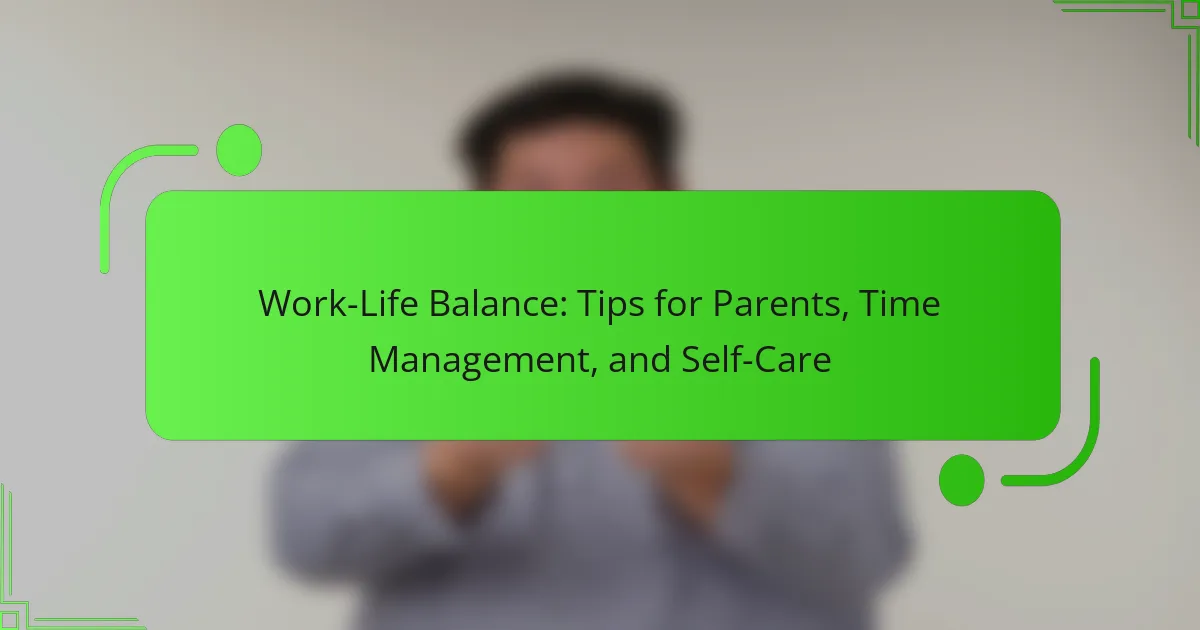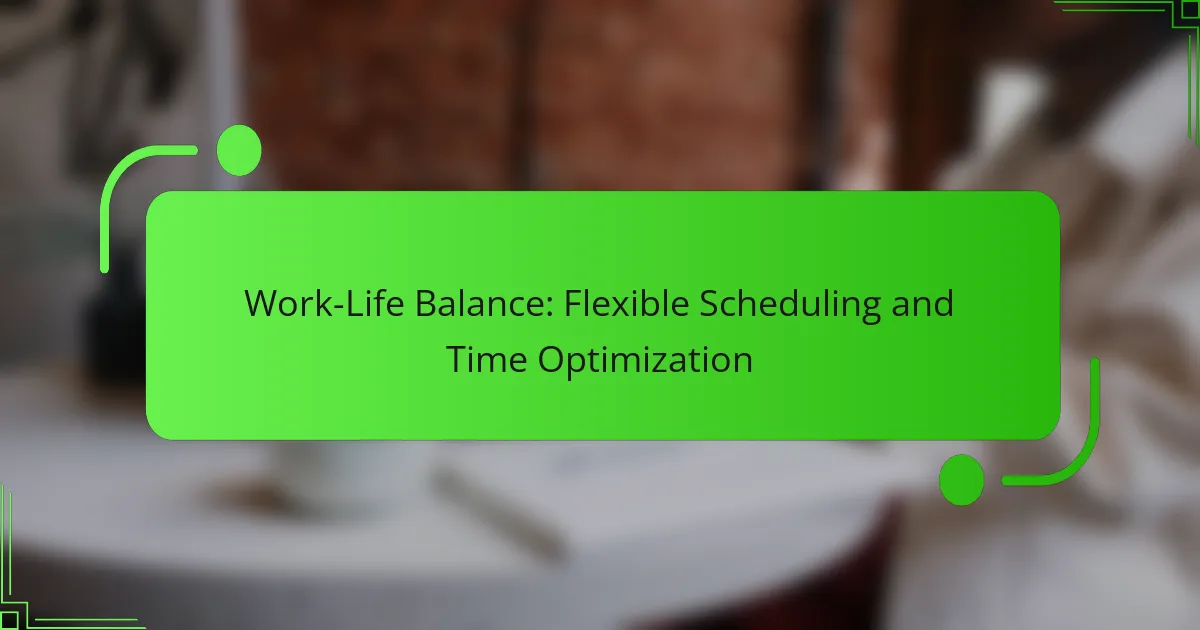Achieving a healthy work-life balance is essential for overall well-being, and mindfulness techniques play a crucial role in this process. By fostering awareness and reducing stress, these practices help individuals manage their emotions and establish clear boundaries between work and personal life. Incorporating effective stress reduction strategies can further enhance productivity and improve coping mechanisms, leading to a more fulfilling and balanced lifestyle.
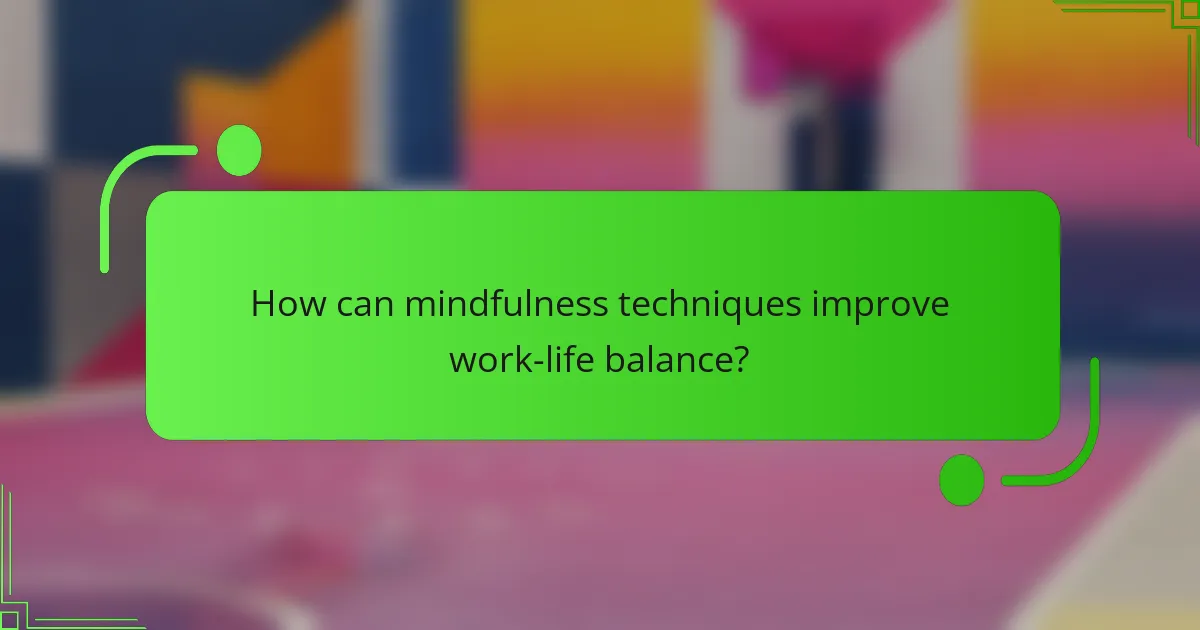
How can mindfulness techniques improve work-life balance?
Mindfulness techniques can significantly enhance work-life balance by promoting awareness and reducing stress. These practices help individuals stay present, manage their emotions, and create a clearer boundary between work and personal life.
Mindfulness meditation
Mindfulness meditation involves focusing on the present moment and observing thoughts without judgment. This practice can reduce anxiety and improve concentration, making it easier to handle work-related stress. Start with just a few minutes daily, gradually increasing the duration as you become more comfortable.
To practice, find a quiet space, sit comfortably, and focus on your breath. If your mind wanders, gently bring your attention back to your breathing. Aim for 10-20 minutes per session for optimal benefits.
Breathing exercises
Breathing exercises are simple yet effective techniques to manage stress and enhance focus. Deep, intentional breathing can lower heart rate and promote relaxation, making it easier to transition from work to personal time.
Try the 4-7-8 technique: inhale for 4 seconds, hold for 7 seconds, and exhale for 8 seconds. Repeat this cycle for several minutes, especially during stressful moments, to regain calm and clarity.
Body scan techniques
Body scan techniques involve mentally scanning your body from head to toe, identifying areas of tension and releasing stress. This practice encourages relaxation and helps you reconnect with your physical self, which is often neglected during busy workdays.
To perform a body scan, lie down comfortably and focus on each part of your body, starting from your toes and moving to your head. Spend a few moments on each area, consciously relaxing any tension you notice. Aim for 10-15 minutes for a full scan.
Journaling practices
Journaling can be a powerful tool for reflection and stress management. Writing about your thoughts and feelings helps clarify your experiences and can provide insights into your work-life balance. Regular journaling can also serve as an emotional outlet.
Set aside time each day or week to write about your experiences, challenges, and achievements. Consider prompts like “What am I grateful for today?” or “What challenges did I face and how did I overcome them?” This practice can enhance self-awareness and promote a healthier mindset.
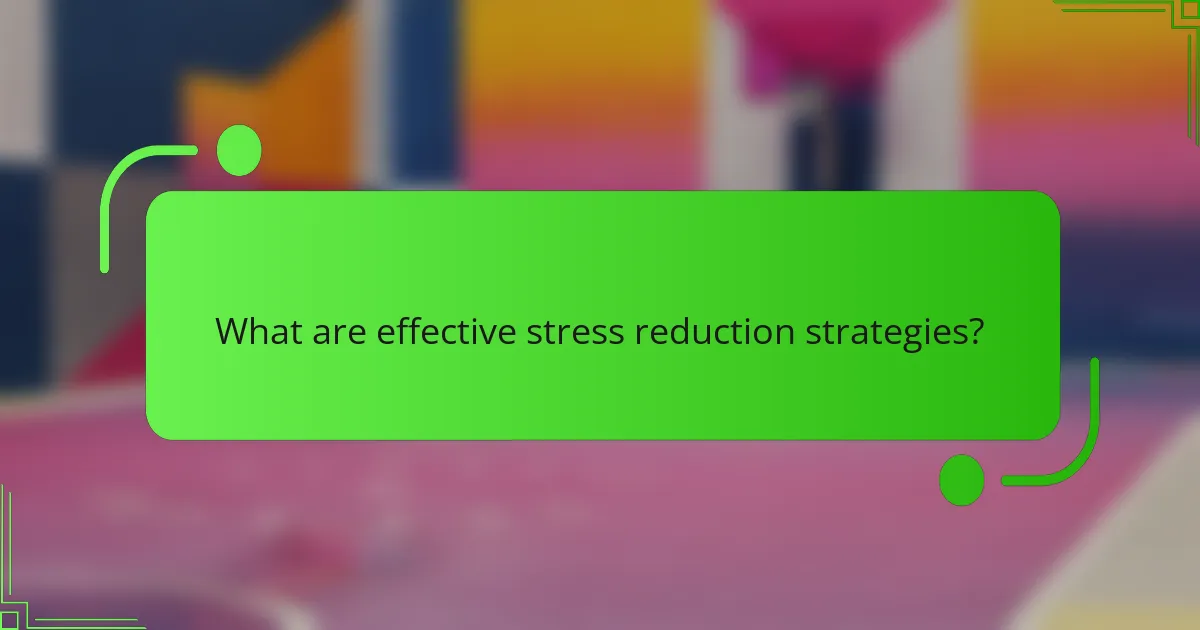
What are effective stress reduction strategies?
Effective stress reduction strategies include time management, physical exercise, healthy eating, and social support. Implementing these techniques can significantly enhance your ability to cope with stress and improve overall well-being.
Time management skills
Time management skills involve organizing and planning how to divide your time among various activities. Effective time management enables you to work smarter, not harder, reducing stress and increasing productivity. Techniques such as prioritizing tasks, setting deadlines, and using tools like calendars can help streamline your daily activities.
Consider using the Eisenhower Matrix to categorize tasks by urgency and importance. This method helps you focus on what truly matters, allowing you to allocate time effectively and minimize feelings of overwhelm.
Physical exercise routines
Regular physical exercise is a powerful stress reduction strategy that can improve mood and boost energy levels. Engaging in activities like walking, jogging, or yoga for at least 30 minutes most days can lead to significant mental health benefits. Aim for a mix of aerobic and strength-training exercises to enhance overall fitness.
Find an exercise routine that you enjoy, as this increases the likelihood of consistency. Group classes or outdoor activities can also provide motivation and foster social connections, further reducing stress.
Healthy eating habits
Maintaining healthy eating habits is crucial for managing stress effectively. A balanced diet rich in fruits, vegetables, whole grains, and lean proteins can enhance your mood and energy levels. Avoid excessive caffeine and sugar, which can lead to energy crashes and increased anxiety.
Consider meal prepping to ensure you have nutritious options readily available. Eating regular, balanced meals can stabilize blood sugar levels, helping to maintain emotional stability throughout the day.
Social support systems
Having a strong social support system is vital for stress management. Friends, family, and colleagues can provide emotional support, practical help, and a sense of belonging, all of which can mitigate stress. Engaging in regular social activities can strengthen these connections and improve resilience against stressors.
Make an effort to nurture your relationships by scheduling regular catch-ups or joining community groups. Remember, reaching out for support is a sign of strength, not weakness, and can lead to healthier coping mechanisms.
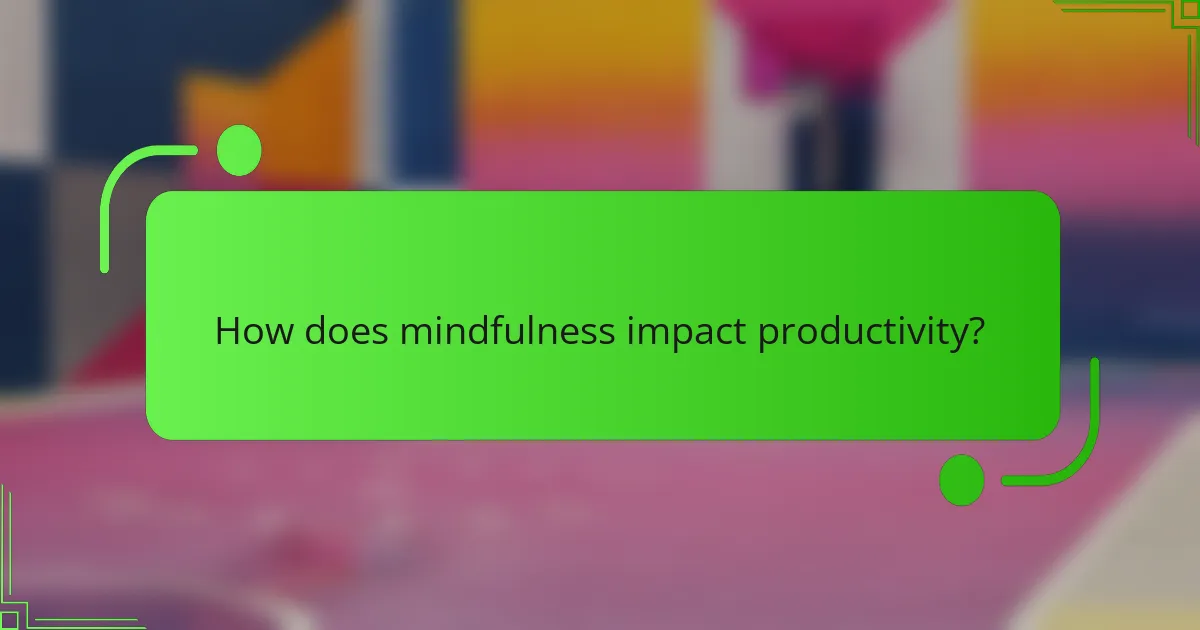
How does mindfulness impact productivity?
Mindfulness significantly enhances productivity by improving focus, creativity, and reducing stress. By practicing mindfulness, individuals can cultivate a greater awareness of their thoughts and emotions, leading to more effective work habits.
Increased focus
Mindfulness techniques, such as meditation and deep breathing, help individuals concentrate better on tasks. By training the mind to stay present, distractions are minimized, allowing for deeper engagement with work. This can lead to completing tasks more efficiently and with higher quality.
To improve focus, consider setting aside a few minutes daily for mindfulness exercises. Simple practices like focusing on your breath or observing your thoughts can sharpen your attention over time.
Enhanced creativity
Practicing mindfulness can unlock creative potential by allowing the mind to explore new ideas without judgment. When individuals are less stressed and more present, they can think outside the box and approach problems from different angles.
Engaging in mindfulness activities, like mindful walking or journaling, can stimulate creative thinking. These practices encourage a flow state, where ideas can emerge more freely, leading to innovative solutions.
Reduced burnout rates
Mindfulness has been shown to lower burnout rates by promoting emotional resilience and stress management. Regular mindfulness practice helps individuals recognize stress signals early and respond to them effectively, preventing escalation.
To combat burnout, incorporate short mindfulness breaks into your workday. Even a few minutes of focused breathing or a brief walk can recharge your mental energy and enhance overall well-being, making it easier to handle work demands.
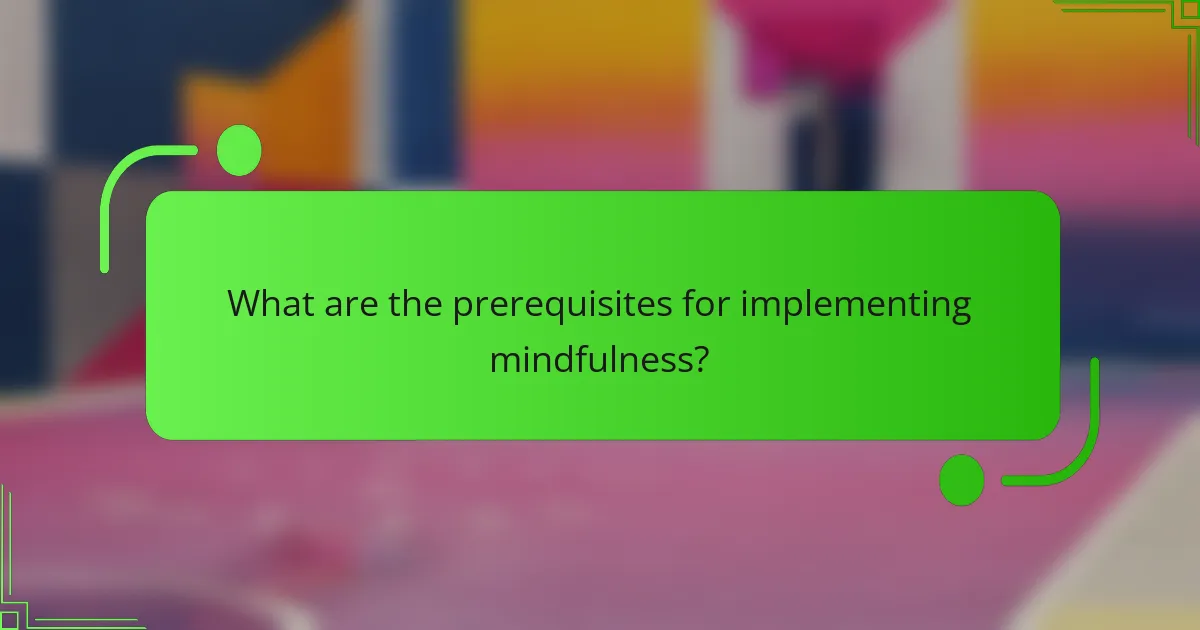
What are the prerequisites for implementing mindfulness?
To successfully implement mindfulness, individuals need a willingness to engage in self-reflection and a commitment to practice regularly. Establishing a conducive environment and setting aside dedicated time can significantly enhance the mindfulness experience.
Understanding mindfulness concepts
Mindfulness involves being fully present and engaged in the moment, without judgment. It encourages awareness of thoughts, feelings, and bodily sensations, fostering a deeper connection to oneself and the surrounding environment.
Key concepts of mindfulness include observation, acceptance, and non-reactivity. Practicing these principles can help reduce stress and improve overall well-being by allowing individuals to respond thoughtfully rather than react impulsively to stressors.
Setting realistic goals
When setting goals for mindfulness practice, it’s crucial to be realistic about what can be achieved. Start with short sessions, perhaps just five to ten minutes daily, and gradually increase the duration as comfort grows.
Common pitfalls include aiming for perfection or expecting immediate results. Instead, focus on consistency and gradual improvement, celebrating small milestones along the way to maintain motivation and commitment.
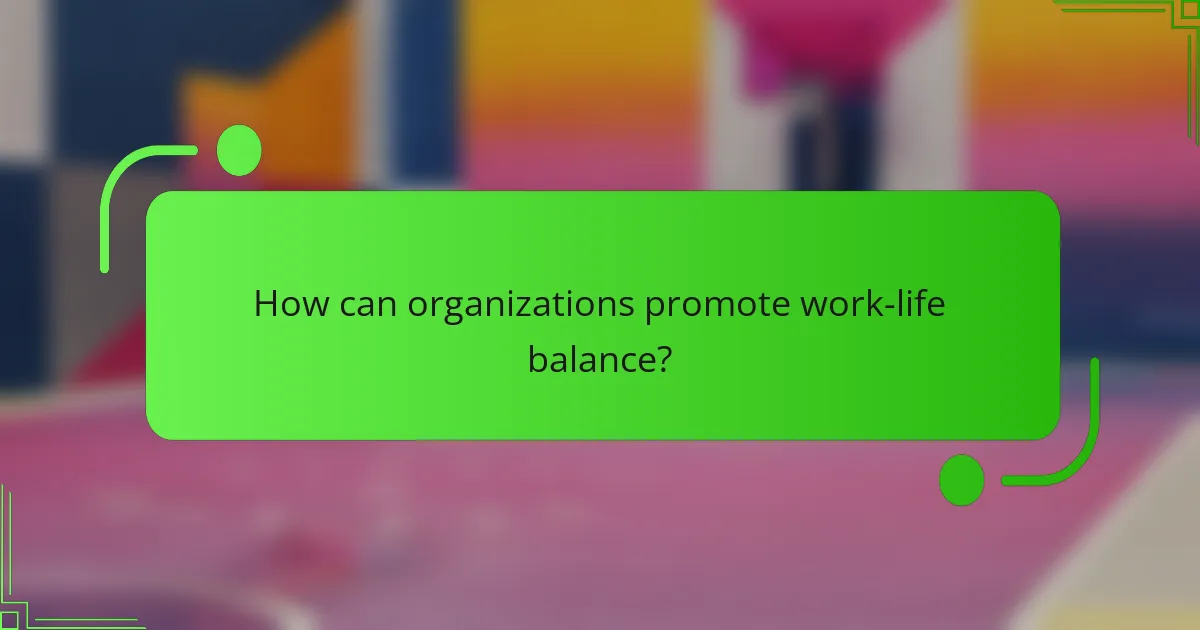
How can organizations promote work-life balance?
Organizations can promote work-life balance by implementing strategies that support employee flexibility and well-being. This can lead to increased job satisfaction, productivity, and overall employee retention.
Flexible work arrangements
Flexible work arrangements allow employees to choose when and where they work, which can significantly enhance their work-life balance. Options such as remote work, flexible hours, and compressed workweeks can accommodate personal commitments and reduce commuting stress.
Organizations should consider offering a variety of flexible options tailored to their workforce’s needs. For instance, allowing employees to start and end their workdays at different times can help them manage family responsibilities or personal interests more effectively.
Employee wellness programs
Employee wellness programs are initiatives designed to improve the physical and mental health of employees, contributing to a better work-life balance. These programs can include fitness classes, mental health resources, and stress management workshops.
To be effective, wellness programs should be accessible and engaging. Organizations might offer incentives for participation, such as discounts on health insurance or wellness-related activities, to encourage employees to take advantage of these resources.
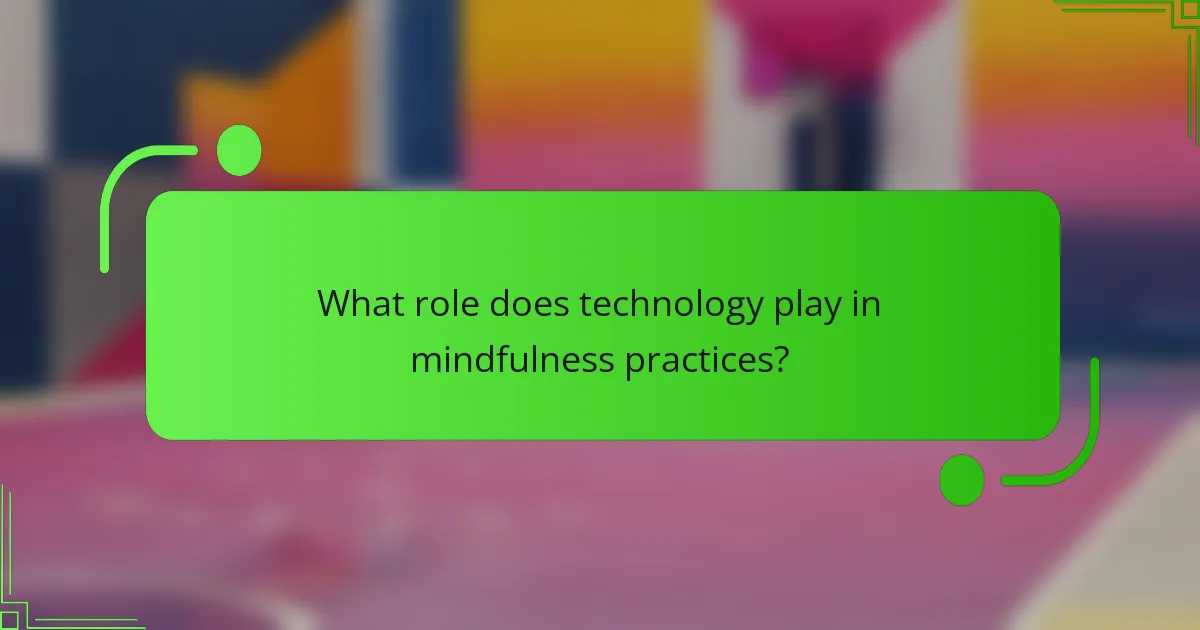
What role does technology play in mindfulness practices?
Technology plays a significant role in enhancing mindfulness practices by providing accessible tools and resources. Through various digital platforms, individuals can engage in mindfulness exercises, track their progress, and connect with communities that support mental well-being.
Mindfulness apps
Mindfulness apps are designed to help users incorporate mindfulness techniques into their daily routines. These applications typically offer guided meditations, breathing exercises, and reminders to practice mindfulness throughout the day.
Popular mindfulness apps include Headspace, Calm, and Insight Timer. Each app has unique features, such as customizable meditation lengths, sleep aids, and progress tracking, allowing users to choose the one that best fits their lifestyle and preferences.
When selecting a mindfulness app, consider factors like user interface, content variety, and subscription costs. Many apps offer free trials or basic versions, making it easier to explore different options before committing financially.
